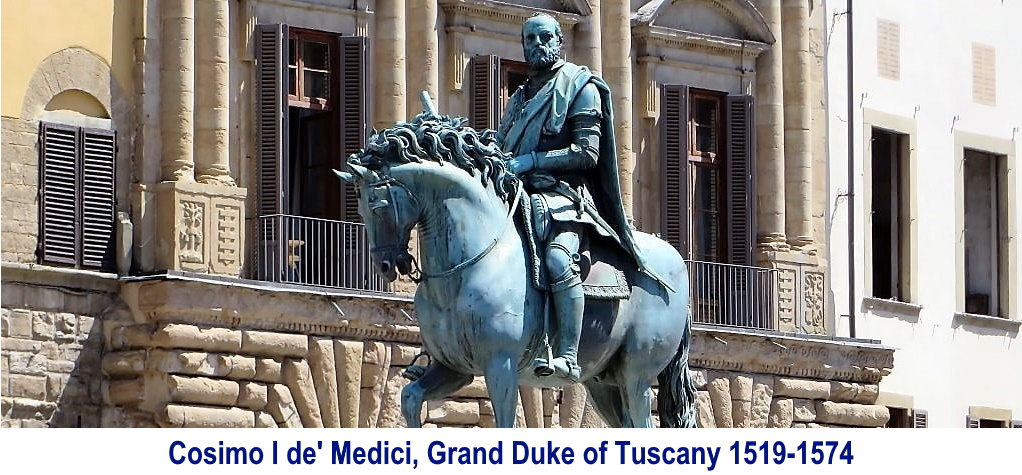In this issue 5 reasons for Harvard’s lost decade Ultra-high-net-worth: managing money the German way CalPERS versus their peers: maybe next year Women in Finance: Rukaiyah Adams, CIO Meyer Memorial Trust, a Portland native gives back Download letter in PDF from https://www.charlesskorina.com/ ————————————————– 5 reasons why Harvard’s endowment stumbled (and 3 reasons why things are looking up) The Harvard endowment has been in the news lately, wrestling with spin-outs, write-offs, and “right-sizing”. As keen observers of investment talent and performance, we have a few thoughts of our own on the reasons for their challenges. Here are our top five. 1. Failure to communicate. In prior years, the Harvard Management Company (HMC) and the University seldom spoke to each other. 2. Bad luck. Jane Mendillo, the former HMC president, joined on July 1, 2008. Six months later, the abyss. 3. Bad investments. Mr. Narvekar, the current HMC president, inherited heaps of garbage. According to the WSJ, he is still shoveling. 4. Chronic indecision. HMC swept dirt under the rug for a decade. Stephen Blyth’s departure forced a reckoning. 5. Size really matters. It’s one thing to lead a staff of ten, quite another to herd three hundred. Before Mr. Narvekar, the saddle didn’t fit. 3 reasons why the future looks brighter 1. HMC board 2.0. The current board is realistic, experienced, and committed. They are all on the same page now. 2. Paul J. Finnegan. Smart, unflappable, and decisive. Harvard University got serious appointing Mr. Finnegan as HMC board chair. 3. N.P. “Narv” Narvekar. A savvy investment profession with no illusions about the challenge. The HMC board got serious when they hired Mr. Narvekar. ————————————————– How they manage their money German family office, multi-billion dollar AUM, best-in-class Why is the German economy so strong? Because Germans believe in work, education, and skill-based training. It’s in…
Family Office Chief Investment Officers: One in a Million
I made my money the old-fashioned way. I was very nice to a wealthy relative right before he died — Malcolm Forbes Everyone is chasing family money these days. Andreesen Horowitz, west coast venture capital powerhouse, is the latest institutional investor to create a wealth management arm. Their hook of course is quite tempting, you let us manage your money and there just might be room for you in our next venture fund. They recently hired Michel Del Buono, formerly of Jordon Park, Makena, and Scion Capital as the new chief investment officer. (Remember Scion Capital and its prescient founder Michael Burry, played by Christian Bale in The Big Short?). Clever devils. For those family offices able to access the top VC firms, the returns can be impressive. Family portfolios produced an internal rate of return of 24 percent in 2021 according to a survey by Silicon Valley Bank. Family wealth, that pot of gold The asset management business is diverse, powerful, and exceptionally profitable. No wonder so many banks, brokers, OCIOs, and RIAs, are clamoring for a piece. Boston Consulting Group’s Global Asset Management Report 2021 estimated $45 trillion in US institutional and retail assets under management at the end of 2020 with revenues as a share of average AUM at 23.7 bps. That’s well over one-hundred billion dollars. Taken as a whole, S&P Global IQ calls financials the most profitable of eleven sectors they follow, with a 25.3 percent profit margin in 2021. Energy firms ranked near the bottom by the way at 8.3 percent, though you wouldn’t know it from the howls coming out of Washington. Ultra-High-Net-Worth (UHNW) families are well aware of the fees and hidden costs attached to wealth management offerings which explains why so many family offices are adding internal investment capabilities. That’s our…
OCIO update: new firms, more AUM
We added HighGround Advisors, Pivotal Advisors, Principal Global Advisors, and Harpswell Capital Advisors to our OCIO Spring 2022 Directory. Outsourced AUM now totals $3.74 trillion, a new record. You will find our full report here and updated directory below. Principal Global Advisors, a subsidiary of the Principal Financial Group, acquired the OCIO assets of Wells Fargo and some of the staff. AUM totals $29.7bn under full discretion. HighGround Advisors, founded in 1930 to manage the Baptist Congregation pension and endowment assets, now serves over four-hundred nonprofit organizations with total AUM of $2.5bn and $1.5bn under full discretion. Harpswell Capital Advisors founded by Jack Moore, manages $455 million in discretionary assets. Pivotal Advisors and Ms. Tiffany McGhee, African-American founder and CIO, currently manage about $400 million with full discretion. This now means we have two African-American owned OCIO firms in our directory of one-hundred-five outsourcing managers. Disciplina, founded by Matthew Wright, president and CIO (former Vanderbilt CIO) is our second African-American owned OCIO firm. That works out to less than two percent, consistent with the handful of African-American stalwarts we found in our reference database of nonprofit chief investment officers and highlighted two years ago. AFRICAN-AMERICAN CIOs at US NONPROFITS ————————————————– Endowments Kim Y. Lew, CEO, Columbia University IMC Brooke Jones, CIO, Bryn Mawr College Charmel Maynard, CIO & Treasurer, University of Miami Frank Bello, CIO Howard University ————————————————– Foundations Joseph Boateng, CIO, Casey Family Programs Rukaiyah Adams, CIO, Meyer Memorial Trust (departs 8/31/22) Nickol Hackett, CIO, Joyce Foundation Bola Olusanya, CIO, The Nature Conservancy ————————————————– Corporate Pensions Dekia M. Scott, CIO, Southern Company Bryan Lewis, CIO, US Steel ————————————————– Public Pensions Mansco Perry III, ExecDir/CIO, Minnesota SBI (retire 10-31-22) Angela Miller-May, CIO, Illinois Municipal Retirement Fund Cheryl Alston, CIO, Employees Retirement Fund City of Dallas Edward “Ted” Wright, CIO, Connecticut…
The Endowment Model: If everyone thinks alike, who’s doing the thinking?
Groupthink is a phenomenon that occurs when a group of well-intentioned people makes irrational or non-optimal decisions spurred by the urge to conform or the belief that dissent is impossible. – Psychology Today It’s hard to find an independent thinker among university endowments these days. Every board member wants to hire a Swensen clone and every CIO wants to partner with Sequoia. Group-think and safety-in-numbers has become the new endowment-model-norm. David Swensen was one of a kind, a different thinker, a pioneer. Swensen blazed a trail thirty years ago and his first book was called Pioneering Portfolio Management for good reason. It was all new stuff. Forget public markets. Spend your time on private opportunities with less visibility and more upside. Today that trail he blazed has become a freeway and the endowment model is one very crowded trade. Richard Ennis, co-founder of EnnisKnupp (AON), points out that in 1994 large endowments with AUM over one billion dollars held on average less than twenty managers in their portfolio. Twenty-five years later the average was well over one hundred, with some holding close to three-hundred funds (asset managers, commingled funds, and partnership interests, NACUBO Study 2019). The strategy du jour on campus is mostly about appeasing the VC and PE gods, doubling down with existing managers and anteing up to the spin-offs. No one wants to be excluded from a new manager or the next flagship fund. Proliferation drives up costs of course. With management fees of two percent of AUM plus a twenty percent carry, plus broken-deal fees and every conceivable expense charged back to the fund, the load can run six to ten percent. As an aside, we hear that Swensen was cutting back on managers and growing more conservative in his final years. We’ll see what course Matthew…
Casey Family Programs and Joseph Boateng CIO: Investing for Children in Need
Our November newsletter looks at one of the country’s biggest and most effective operating foundations – the $2.5 billion AUM Casey Family Programs (CFP) in Seattle – and Joseph Boateng, the man who manages the money. An “operating” foundation uses most of its resources to run its own, internally-managed charitable programs. Among the 86,000 foundations in the U.S. totaling $715 billion in assets, almost all are grant-makers. Only 5 percent run their own charities as CFP does. This has implications, as we shall see, for their investment program. In 1907, 19-year-old Jim Casey and his 18-year-old pal Claude Ryan between them had one bicycle and $100 borrowed from a friend. They set up the American Messenger Company, operating out of a hotel basement in Seattle. The automobile was still a novelty and aviation barely existed. His brother George and a few friends worked as messengers. The tiny bike-messenger company grew into mighty UPS, with an enterprise value of over $100 billion and which now moves its packages on its own aerial fleet (UPS Airlines), flying hundreds of giant jet freighters all over the globe. Not to mention 96,000 trucks, vans, tractors and even motorcycles. Alas, no bikes. When Mr. Casey died in 1983 he’d turned his borrowed $100 into a personal fortune of $100 million. Most of that went into the CFP operating foundation and the related grant maker Annie E. Casey Foundation. The former is still sited in Seattle, while the latter – also focused on child welfare – is in Baltimore. For any of our readers who lives have been touched by foster care, you know Casey. President and CEO William C. Bell, Ph.D., a former New York City commissioner for Child Services, joined CFP in 2004 and became CEO in 2006. A year later the Casey Board recruited Joseph Boateng to work with Dr. Bell as the foundation’s…





